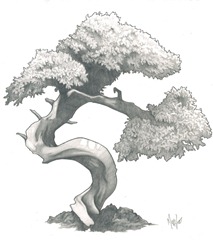 The use of shading is important in climates such as where I live Texas, USA. Many of my trees would not survive the extremes of heat and humidity without it.
The use of shading is important in climates such as where I live Texas, USA. Many of my trees would not survive the extremes of heat and humidity without it.Many Tropical species will not tolerate direct sun either, as they are naturally understorey trees in their native habitat, where they are shaded most of the time by larger overhanging trees in the jungles of Asia and South America.
The shading cloth allows sufficient light for growth to reach the trees whilst protecting them from direct sunlight. Trees left in direct sunlight in Texas (and other similar climates) can become severely heated and burnt.
Leaves can become desiccated (dried out) as water is so quickly evaporated in the heat. Pot and soil temperatures can rise to the point where continual watering is necessary to avoid permanent damage to the roots.
The material itself is usually graded by the percentage of light allowed to infiltrate, ranging from around 40% to 80%, the former being more suitable for areas of moderate summer climates and temperatures in the upper 80°'s F -low 90°'s F.
I live in SE Texas in the central United States, with temperatures reaching the mid 90's to 100s, and have found a 60% range works best under most situations, lowering the temperature underneath by as much as 10°F.
The exception might be some of the less heat tolerant species such as Acer palmatum (Dissectum / or cut leaf varieties in particular). These need full shade throughout the mid to late summer months, as they suffer severe leaf scorching to the point of defoliation. More shade would be required for example in a desert condition with 100°F temperatures as the rule rather than the exception, so 80% or more would be a better choice. You may also further fine-tune it by doubling up a lower grade to achieve something in between.
Shade Protection Shading material can be obtained at many major garden suppliers. I've also found it available at many greenhouse suppliers. There are different versions and methods of manufacture available, but they all accomplish the same end results. In some cases, the expense and trouble would be of little benefit to trees, particularly in milder Northern climates where no protection is needed at all and could actually impede light and therefore growth. In other situations, heavily wooded locations with many large trees overhead, it may also be unnecessary.
In conclusion, the level or lack of shade required, should be given on an individual species basis, given the needs and heat tolerance of each tree species.
Construction on Shading.
Here follows an example of how I construct my shading each Spring;
After determining the dimensions of the shade material, I began the layout of the frame work, in this case PVC pipe in a 1" diameter sizing it to allow 4-6" extra on all sides of the cloth. I choose this medium for the framework, for it's lightweight and strength.
NOTE: You will need to ensure that the frame is kept square, and to prevent warping while attaching the material, I used a series of pipe fittings at the corners to form cross braces on the diagonal.
I also found through trial and error, that the laces need to be re-enforced with grommets to prevent the cloth tearing.
The framed shade material is then taken to the location where it is to be installed and erected on poles from pipe of the same diameter with the use of "Tee" fittings incorporated into the frame during construction for this purpose.
The poles are attached to the ground below by slipping them approx. 10-12" deep into anchoring pipe of the next larger diameter, in this case 1 1/4," which I've driven into the ground from a point just above the surface to approx. 18-20" deep.
Note: It will be necessary to remove the anchor pipe at intervals while driving them in, to remove soil that will begin to fill the inside as it goes, thus preventing the supporting poles from fitting into them.
The poles are then attached without the use of PVC glue to the "Tee" fittings above and the Anchors below through the use of screws to hold them in place. This will allow the easy removal of the frame during the winter months when needed for heavy snow and/or to remove the heavy build of leaves during the fall (Autumn).

Custom Search
If you liked this article, subscribe to the feed by clicking the image below to keep informed about new contents of the blog:

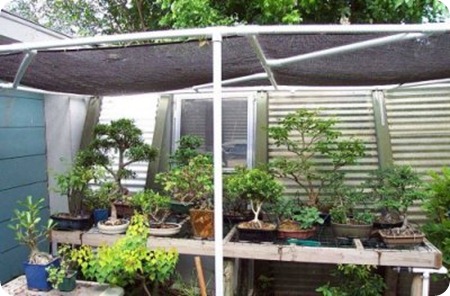
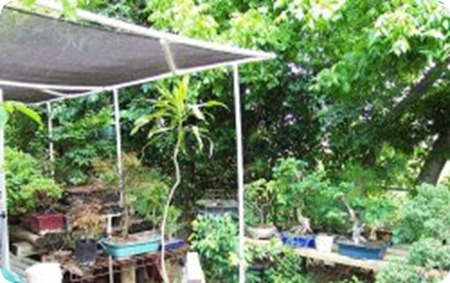
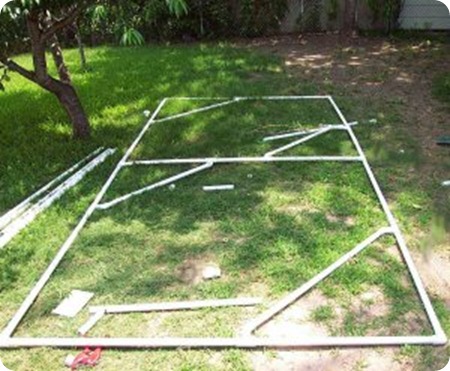
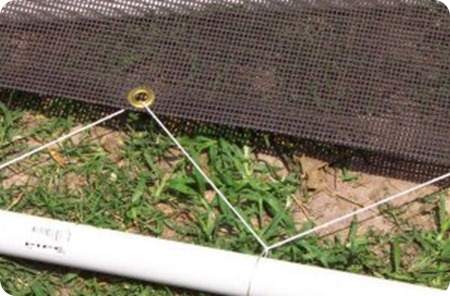
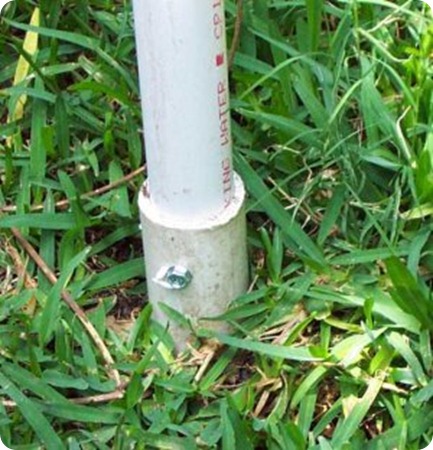
0 commenti :
Post a Comment